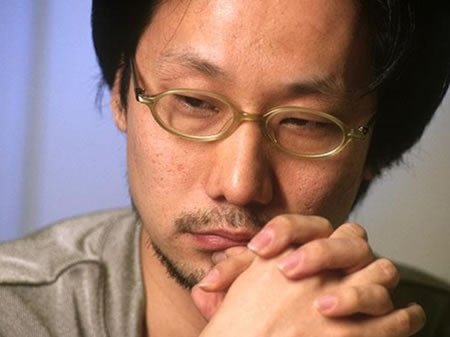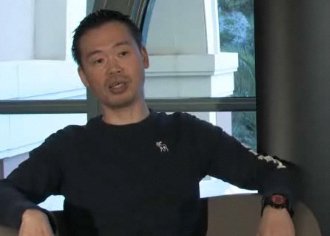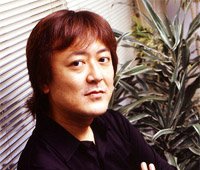Konami's Kojima, Capcom's Inafune, Sega's Nagoshi discuss Project Natal's potential
Three Japanese game industry heavyweights discuss the possibilities of Microsoft's motion-sensing tech and how it will affect the future of games.
Who Was There: The Microsoft Creator's Panel at this year's Tokyo Game Show featured three of Japan's most celebrated game developers, who have never before been in the same room together. The panel consisted of Sega's Toshihiro Nagoshi (Super Monkey Ball), Capcom's Keiji Inafune (Dead Rising 2), and Konami's Hideo Kojima (Metal Gear Solid Rising). The panel discussion was moderated by Takashi Sensui, general manager of the Home and Entertainment division at Microsoft.
What They Talked About: It's hard to downplay the interest that Project Natal has generated both within and outside of the games industry. This morning, Microsoft announced an impressive list of publishers that are "actively working on games" using the technology, including Activision Blizzard, Bethesda, Ubisoft, Capcom, and Konami. During this mediated panel discussion, the publisher showed off three Japanese creators who have embraced Project Natal and have already begun to map out its future in video game development.
Starting the proceedings was a video message from Don Mattrick, senior vice president of Interactive Entertainment Business at Microsoft, who praised the three men and their work, congratulating them on making video games more accessible and stating that the Xbox 360 is the best platform for Japanese game developers to work with. To back his statement, Mattrick told the audience that the top 20 Japanese titles to be released in the US over the past year have sold 20 percent better on the Xbox 360 than any other platform.
Sensui then kicked off the discussion by asking Nagoshi, Inafune, and Kojima about their first impressions of Project Natal. Nagoshi related his experience seeing Natal for the first time, admitting he was somewhat skeptical at first, unsure of why Microsoft was showing him a sensor. Things changed quickly: after the demonstration, Nagoshi immediately found himself asking when he could get his hands on the technology.
Inafune shared a similar experience, relating how his mind began to swarm with ideas the minute he realised what he was witnessing. For Kojima, seeing Natal for the first time was a shock. He likened the experience to the first time he witnessed the transition between 2D to 3D technology, saying he knew that a lot of different companies had tried to come up with similar things, but he was shocked to see that Microsoft had gotten there first.
"I had to restrain myself from telling everyone I met," Kojima told the audience.
The next question pertained to the potential of Project Natal, where Inafune explained how game developers are often reluctant to throw away the past. "But with Natal, we don't have to throw away the technoloies we've built on. We can add to them. This technology surpasses anything we have at the same time as treasuring the current tradition. I see the potential of Natal, and it's not just a traditional fad."
Kojima responded that true innovation is not having a game controller to hold onto, and that's what Natal is. He believes Natal will not only change the future of video games, but whole lifestyles, from shopping to advertising to doing business.
The panel was then asked about the impact of Project Natal on the video game world. Inafune and Kojima both replied that Natal will raise the bar in all aspects of entertainment and allow people to be connected with their machines in a way that we've encountered only in science fiction. Even people who are not gamers can be a part of it because Natal is based on intuition, something that will take video games to a whole new level of interactivity.
The other key issue discussed by the panel was the capabilities of video games to elicit emotions. For Kojima, the excitement of something like Natal is in the idea that a machine can recognize and understand human emotions and interact with humans in ways never before seen. With the growth of networks, graphics, and peripherals in video games, Natal will allow gamers to express real emotions within a gameworld. Nagoshi then gave the example of caressing a character within a video game, or holding on to an item with both hands. It was agreed by all three panelists that current controllers limit the amount of emotion that gamers invest into a game experience.
The next question put to the panelists was about the reaction of gamers to a new technology like Natal. Kojima declared that gamers will soon become accustomed to not holding a controller in their hands, even if some gamers might at first feel alienated. However, he recognized that it was up to developers to try to bridge this gap with the software they developed. Inafune cut in, saying that while developers have to respond to the expectations of gamers, they cannot overdo it. If this were to happen, gamers may not understand the new direction and may feel left behind.
Nagoshi agreed, saying, "We have to nurture gamers, not just jump into something completely new. It has to be a smooth transition." Before wrapping the point, he joked that Natal signals the beginning of the gaming of tomorrow. "Remember the film Back to the Future? We're very close to that future right now," he said.
The discussion then turned to other uses for Project Natal besides gaming, where Kojima spoke up about the benefits of the technology in the field of medicine and assistance to the elderly and sick. Inafune also pointed out that with Natal, those with disabilities will be able to enjoy the experience of gaming in the same way that they could not before, since Natal relies on things like vocal intonation and face recognition.
It was agreed that game developers would have to show the rest of the world the way forward. "We have to be role models with Natal and act responsibly," said Inafune. "We can lead people and show them the potential of Natal. We [game developers] are serious people, and we can lead the rest of the world to this new technology."
The panel closed with each of the creators talking about their vision for the future with Project Natal. For Inafune, the dream is to one day create emotionally complex video games that have a "big impact on the heart" in the same vein as films. Nagoshi wants to use Natal to create a "sense of life." Kojima replied that for him, coming face-to-face with a technology that can understand who he truly is was his childhood dream, and now that he has it he will use it to make the best video games he can. "Natal is the person who understands me best," he summarized.
Quote: Hideo Kojima: "Using Natal, I'd like to come up with a completely new game that no one has seen before. I know I have lots of fans that are loyal to me, and I don't want to leave them behind. So maybe I can come up with a car that can fly, so my fans can follow me...metaphorically speaking, of course."
Takeaway: The panel was unanimous that the possibilities of Project Natal seem endless and varied. Whether the public feels the same way when the technology hits the market next year remains to be seen.
Metaphor: ReFantazio The King’s Trial Trailer Tales of the Shire - Official Announcement Trailer Dead Island 2 – Steam Launch Trailer Nickelodeon All-Star Brawl 2 - Official Zuko Gameplay Spotlight Trailer Valheim: Ashlands - Official Gameplay Trailer Tales of Kenzera: ZAU GameSpot Video Review Stellar Blade - Beta Skills Gameplay Trailer | PS5 Games Stellar Blade - Burst Skills Gameplay Trailer | PS5 Games GODDESS OF VICTORY: NIKKE | New Main Chapter 29~30 Update Trailer GODDESS OF VICTORY: NIKKE | Happy 1.5 Anniversary Trailer GODDESS OF VICTORY: NIKKE | Kilo Character Motion Demonstration Trailer How The Fallout TV Show Shapes Fallout's Future
Please enter your date of birth to view this video
By clicking 'enter', you agree to GameSpot's
Terms of Use and Privacy Policy
Got a news tip or want to contact us directly? Email news@gamespot.com



Join the conversation